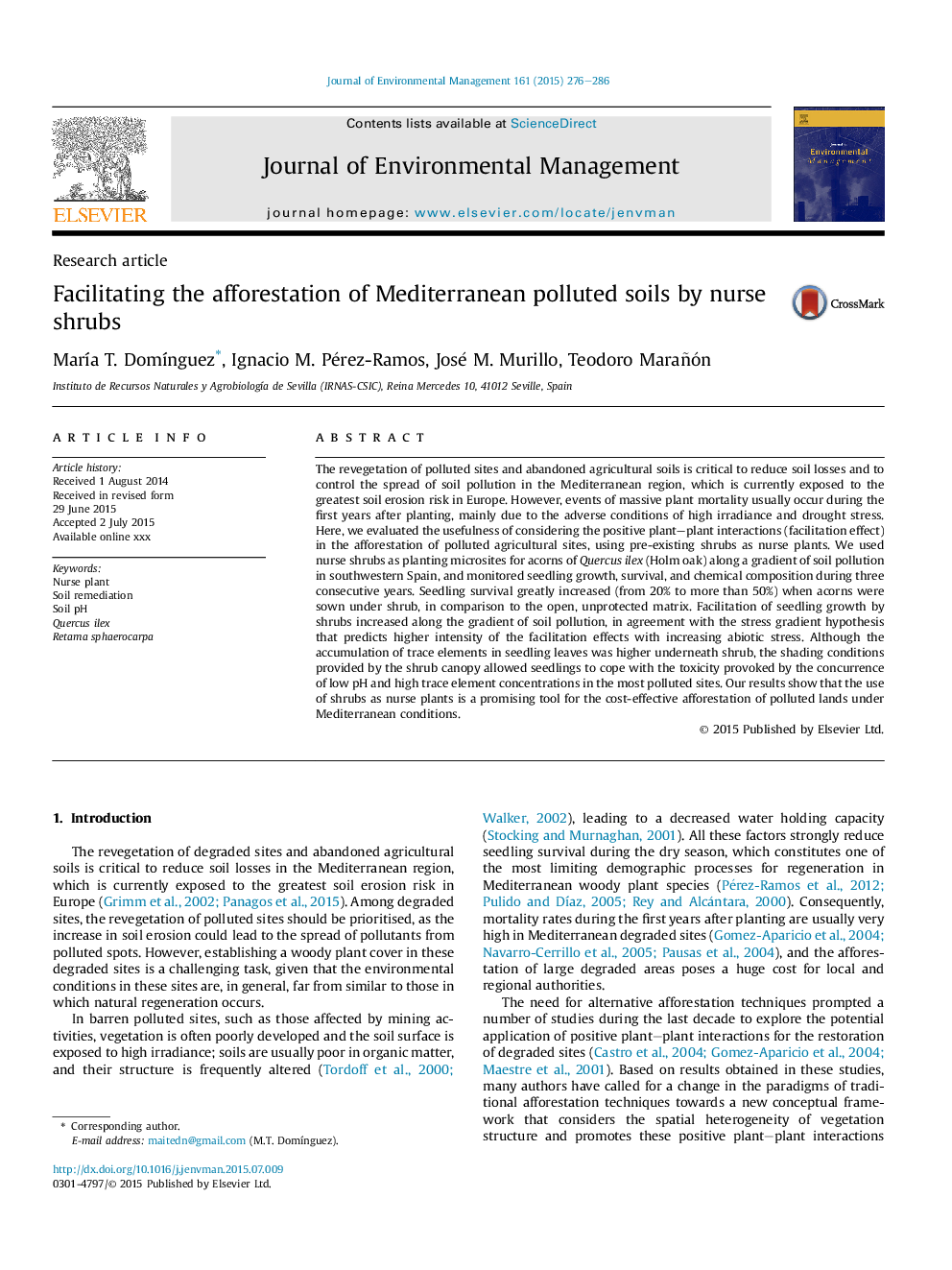| Article ID | Journal | Published Year | Pages | File Type |
|---|---|---|---|---|
| 7481782 | Journal of Environmental Management | 2015 | 11 Pages |
Abstract
The revegetation of polluted sites and abandoned agricultural soils is critical to reduce soil losses and to control the spread of soil pollution in the Mediterranean region, which is currently exposed to the greatest soil erosion risk in Europe. However, events of massive plant mortality usually occur during the first years after planting, mainly due to the adverse conditions of high irradiance and drought stress. Here, we evaluated the usefulness of considering the positive plant-plant interactions (facilitation effect) in the afforestation of polluted agricultural sites, using pre-existing shrubs as nurse plants. We used nurse shrubs as planting microsites for acorns of Quercus ilex (Holm oak) along a gradient of soil pollution in southwestern Spain, and monitored seedling growth, survival, and chemical composition during three consecutive years. Seedling survival greatly increased (from 20% to more than 50%) when acorns were sown under shrub, in comparison to the open, unprotected matrix. Facilitation of seedling growth by shrubs increased along the gradient of soil pollution, in agreement with the stress gradient hypothesis that predicts higher intensity of the facilitation effects with increasing abiotic stress. Although the accumulation of trace elements in seedling leaves was higher underneath shrub, the shading conditions provided by the shrub canopy allowed seedlings to cope with the toxicity provoked by the concurrence of low pH and high trace element concentrations in the most polluted sites. Our results show that the use of shrubs as nurse plants is a promising tool for the cost-effective afforestation of polluted lands under Mediterranean conditions.
Related Topics
Physical Sciences and Engineering
Energy
Renewable Energy, Sustainability and the Environment
Authors
MarÃa T. DomÃnguez, Ignacio M. Pérez-Ramos, José M. Murillo, Teodoro Marañón,
